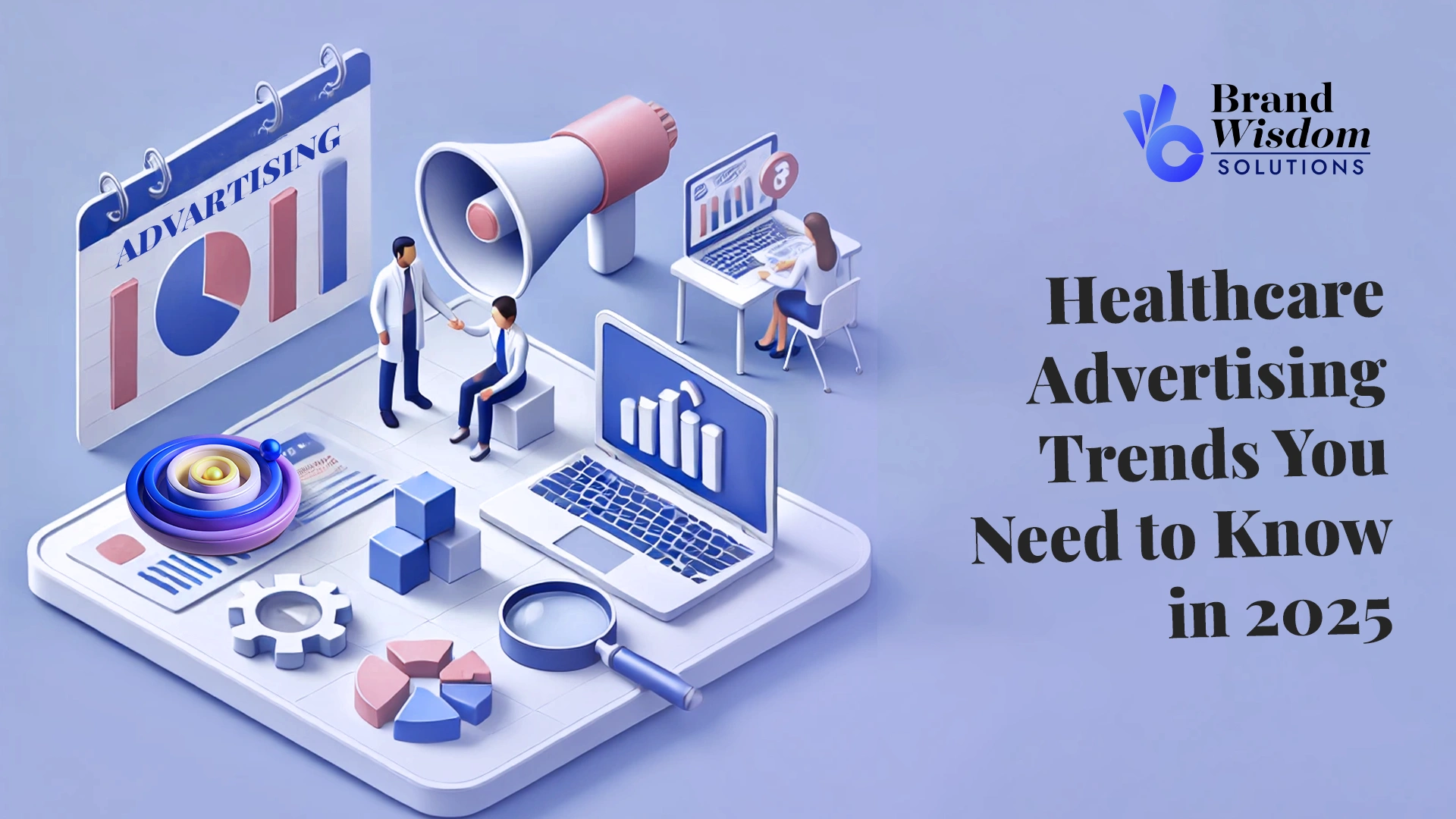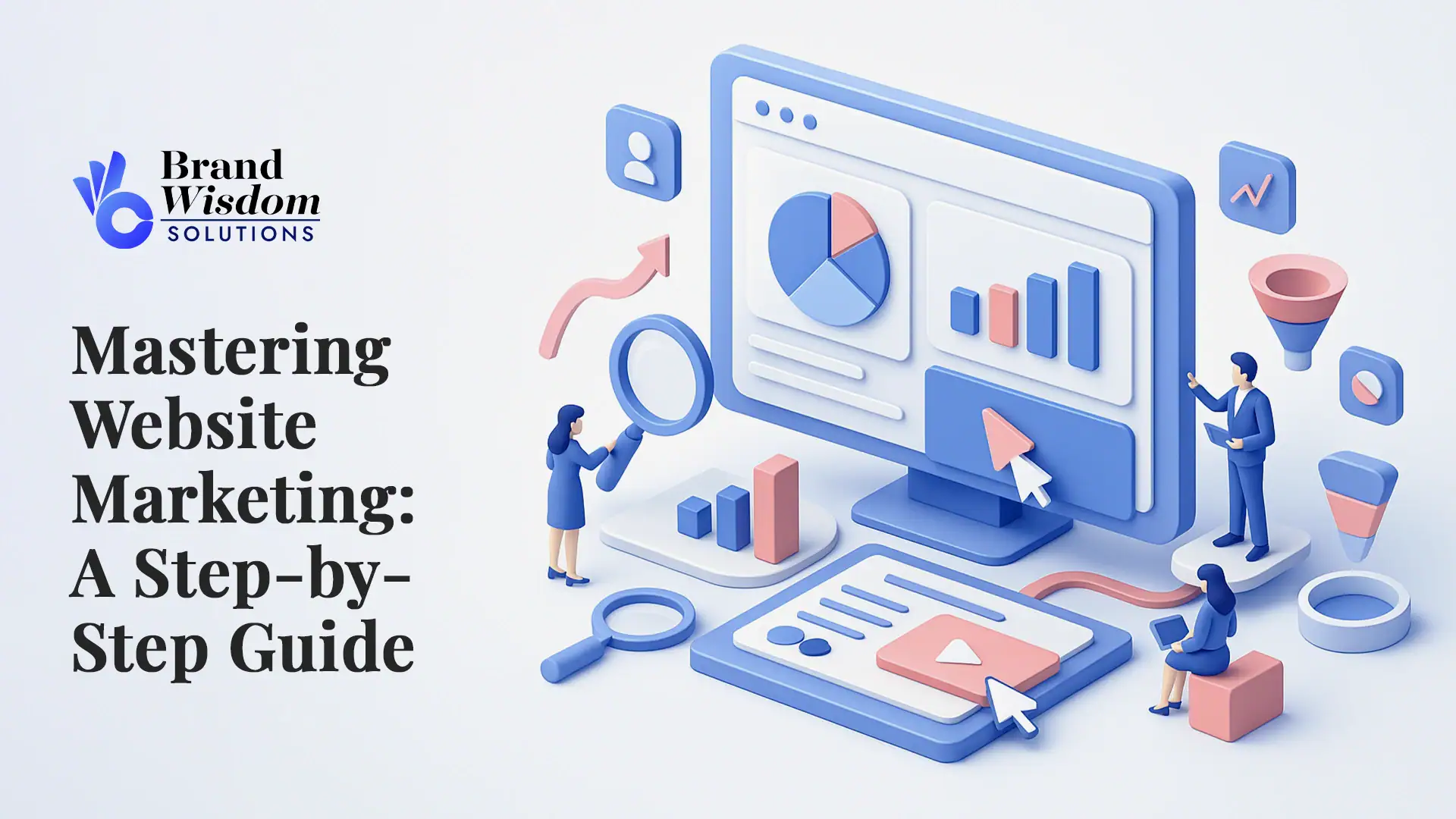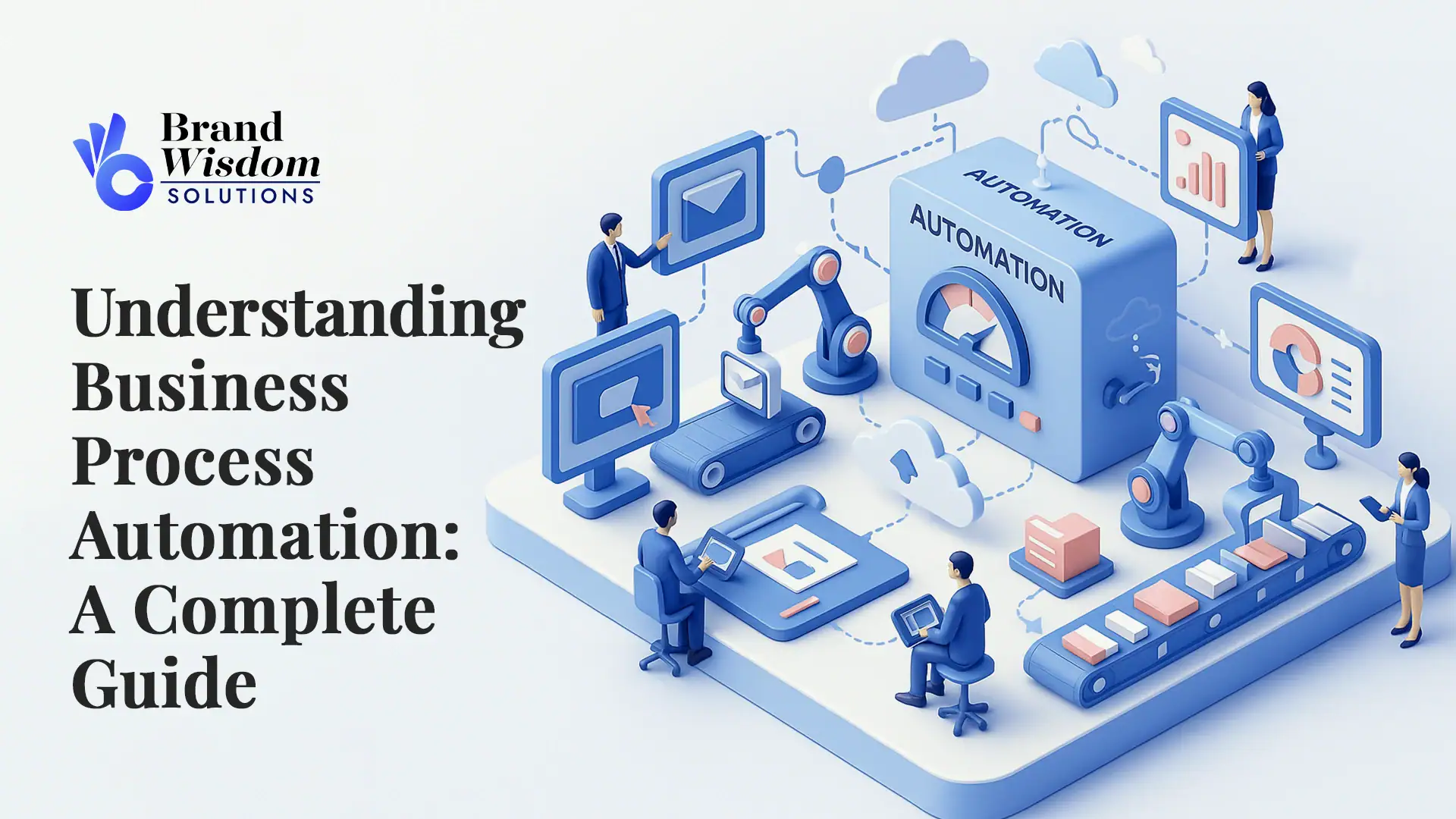Healthcare advertising is changing rapidly with digital advancements, reforming the way the healthcare sector connects with its users. The transformation is significantly affecting healthcare marketing. With each passing year, as we approach 2025, it is more crucial than ever for healthcare providers, hospitals, pharmaceutical manufacturers, and others involved in the sector to have good healthcare marketing strategies and digital marketing tactics. This new path indicates that healthcare marketers have to keep pace with emerging technologies and pay attention to changing consumer behavior.
Emerging Technologies in Healthcare Advertising

Healthcare advertising is rapidly evolving as a result of new technologies. They are revolutionizing the manner in which healthcare services are delivered and the way in which healthcare organizations communicate with their target audience.
Artificial intelligence and predictive analytics are revolutionizing how healthcare marketers locate prospective patients. They enable them to build customized messages and measure how effective campaigns are. These emerging technologies hold incredible opportunities for healthcare advertisers to produce more targeted and interactive campaigns.
The Rise of AI and Machine Learning
Machine learning and AI are revolutionizing healthcare advertising, making it more targeted and intelligent. These technologies scan large data sets to determine patterns and forecast behavior, enabling marketers to target the right audience at the right moment with increased precision.
Through machine learning, adverts can now be tailor-made according to an individual’s health interest, age, and web use. For instance, a person looking into a condition may soon receive adverts for associated cures, similar to how corporations like Pfizer market their new discoveries. With AI advancing further, even more sophisticated and tailored methods in healthcare marketing are on the way.
Advancements in Predictive Analytics
Predictive analytics is revolutionizing healthcare marketing through the utilization of patient information to predict future healthcare needs and tendencies. Marketers are able to target patients at risk for conditions and engage them at an early stage with corresponding, beneficial information. Being proactive in doing so facilitates preventive care and enhances total patient outcomes.
By targeting resources at those most likely to require their services, healthcare organizations are able to optimize the use of their marketing dollars. Predictive analytics allows for targeted messaging and personalized outreach, building the link between providers and potential patients while maximizing campaign impact.
Importance of Personalization in Healthcare Advertising

Personalization is critical in healthcare advertising. Those days are gone when the same message went to everybody. Now healthcare consumers demand experiences that match their choices and requirements.
Healthcare marketers can use technology and data to craft messages that resonate. This implies that they can divide individuals into groups according to age, health conditions, and internet usage. This allows them to provide valuable information at the appropriate time and in the most effective manners.
Customizing Patient Communication
Personalization in health care marketing extends well beyond addressing a patient by name — it means developing messages that take into account their unique health conditions, concerns, and preferences. For example, a physician who has expertise in diabetes can provide customized content that speaks directly to the needs and challenges of people living with the condition.
Personalized communication via emails, websites, and social media fosters trust and engagement. When patients are heard and respected, they respond more favorably and will request care. Personalized messaging also encourages active patient engagement in health by delivering timely, pertinent information that enables informed decision-making.
Targeted Advertising Based on Patient Data
Targeted advertising driven by patient data allows healthcare organizations to reach specific audiences more effectively. By harnessing patient insights gleaned from customer relationship management platforms — such as age, clinical history, and online activity — providers can send personalized communications about relevant services, therapies, or health education. For instance, a heart health center may target advertisements to patients with cardiac conditions or consumers searching for heart wellness advice, boosting engagement and conversion.
But ethical use of information is essential. Healthcare organizations need to ensure patient privacy and be open about how data is gathered and utilized for advertising. Transparency instills trust and ensures that targeted healthcare advertising is effective and responsible.
Shift Towards Digital and Mobile Platforms

With the rapid change of technology and more individuals using digital tools every day, healthcare advertising is shifting dramatically towards mobile and online digital media. This transformation occurs because a lot of people like to search for health-related information online. Digital media give an excellent method of reaching lots of people.
Mobile applications, social media, and search engine optimization are becoming increasingly crucial as more consumers use the internet. Healthcare providers, pharmaceutical firms, and other healthcare organizations recognize the necessity of establishing a strong online presence. This will enable them to better engage with their target audience.
Increased Use of Mobile Apps for Health Ads
Health and wellness mobile apps are now critical vehicles for health goal management. This trend is a huge opportunity for healthcare marketers. By including health advertisements on these apps, they can reach directly an active audience searching for health services and information.
In addition to this, mobile applications also enable advertisers to target by location when showing advertisements. For instance, a medical care provider may target individuals around their clinic with specific advertisements. This targeting ensures that medical ads will reach those who will be most helped by them.
But healthcare advertisers must ensure advertisements integrate seamlessly within the app without disrupting users. They have to come up with a method for giving useful information without compromising users’ privacy.
Effectiveness of Social Media Campaigns
Social media marketing is increasingly a necessity for success in the evolving healthcare environment. Social media platforms such as Facebook, Instagram, and YouTube offer a unique opportunity to engage with a large audience searching for health information and are interested in health issues.
Effective social media campaigns employ attention-grabbing images, educational videos, and compelling posts to assist in educating and empowering patients. These sites are ideal for community building. They assist healthcare professionals in demonstrating that they are credible sources of information and establish genuine connections with individuals.
Regulatory Changes Impacting Healthcare Advertising

The evolving online landscape and the increasing practice of using patient information in healthcare advertising have prompted stricter regulations. These regulations are set to preserve patient privacy and ensure equitable marketing. Healthcare marketers must comply with a complex set of guidelines.
It is essential for any healthcare organization to stay updated with recent healthcare legislation and data privacy regulations. If they fail to comply with these updates, they may be subject to huge fines, legal problems, and damage to their reputation.
New Policies in 2025
In 2025 and beyond, we will notice greater emphasis on healthcare ad data privacy. New regulations might emerge that emphasize patient consent, data protection, and transparency regarding how patient data is collected, shared, and utilized for marketing.
Much of this is the application of AI and machine learning in healthcare marketing. Regulators are attempting to set guidelines to ensure these technologies are utilized responsibly. They don’t want any form of bias and want to ensure patient privacy. Healthcare marketers must remain nimble and adapt their plans with these new guidelines.
Compliance and Legal Considerations
Compliance with healthcare laws and advertising regulations is crucial in healthcare advertising, particularly those concerning HIPAA and pharmaceutical promotion. It is necessary to be open regarding data collection and use, having explicit patient approval for any kind of marketing activities. Advertising must be accurate, evidence-based, and not have misleading information. Working with compliance and legal groups ensures ethicality and minimizes potential risks.
The Role of Telemedicine in Marketing Strategies

The expansion of telemedicine is altering the delivery of healthcare. It is also altering the marketing of healthcare. Virtual visits and remote check-ups are being used more by patients. Due to this, healthcare organizations need to integrate telemedicine as a best practice in marketing.
In order to capture and engage the technologically sophisticated healthcare consumers, there is a need to present the advantages of telehealth within healthcare advertising. This marketing refresh indicates how the experience of caring for patients is changing.
Integrating Telehealth Features in Ads
Embedding telehealth functionalities within healthcare marketing can have a significant impact on patient activation and virtual care service adoption. For instance, a prominent message such as “Book a Telehealth Appointment Today” conveys the convenience and accessibility of distant care and motivates patients to act.
Ads can also stress benefits like time-saving, no travel, and access to care at home. Touting patient testimonials on how easy and convenient telemedicine is helps build credibility and encourages others to seek it out. By framing telehealth as easy and convenient, health care marketers are able to reach and provide care to more people — particularly those with poor access to face-to-face care.
Marketing Telemedicine to Tech-Savvy Consumers
Marketing telemedicine services to technologically savvy consumers means reaching out to them where they are — on social media, online discussion boards, health-oriented websites, and smart phones. These consumers already feel comfortable utilizing technology to receive healthcare, so digital marketing is the most useful method to reach them.
Content marketing is central to informing and activating this group. Education and adoption can be encouraged by blog posts, videos, and infographics that make clear how telehealth functions. Collaboration with tech influencers or healthcare bloggers is an additional way to enhance credibility and visibility. By framing telemedicine as a convenient, contemporary solution, marketers are able to successfully reach and convert health-conscious tech users.
The Power of Content Marketing in Healthcare Advertising

Content marketing is quite crucial in healthcare advertising. It is an effective means to educate, engage, and establish trust with existing patients. Through presenting useful and compelling content, healthcare organizations are able to demonstrate their expertise and forge stronger bonds with their target markets.
Through blog entries, articles, videos, and social media posts, content marketing provides healthcare organizations with an opportunity to present vital health information in a simple-to-understand format. This patient focus assists not only in attracting patients but also in bringing them back.
Educative Video Content
Educational video content is an effective weapon in healthcare marketing, simplifying sophisticated medical information into something easy to grasp and even entertaining. Short-form videos—such as animated explainers, expert interviews, or patient narratives—perform optimally on websites like YouTube, Instagram, and Facebook, where users scroll through rapidly. The videos not only grab attention but also establish credibility by making healthcare more relatable and enabling people to connect with providers on an emotional level.
Blogging and Patient Awareness
Blogging is a powerful means for healthcare organizations to communicate useful health information, create awareness, and establish themselves as reliable sources. Good-quality blog entries can discuss typical health issues, provide medical updates, and provide useful wellness tips. Frequent publishing establishes credibility and keeps patients up to date.
Through optimized content with valuable keywords and expert commentary, medical blogs can increase search rankings and appeal to patients looking for sound information online. Comment and discussion also invite patient engagement, which assists providers in creating community and reinforcing relationships with readers.
Analytics and Performance Measurement

Data is the king of healthcare marketing in India. Quantifying the success of healthcare marketing initiatives is important to refine strategies, maximize ROI, and ensure that marketing is aligned to organizational objectives.
Healthcare marketers must monitor key performance indicators (KPIs) in order to gauge what’s successful, determine areas for improvement, and prove the return on marketing investment.
| Key Performance Indicator | Description |
| Website Traffic | The number of visitors to a healthcare provider’s website, indicating the reach and effectiveness of online marketing efforts. |
| Patient Acquisition Cost | The cost associated with acquiring a new patient through marketing campaigns, allowing for cost-effectiveness analysis. |
| Conversion Rate | The percentage of website visitors or ad viewers who take a desired action, such as booking an appointment or filling out a contact form, reflecting campaign effectiveness. |
| Patient Engagement | Metrics such as likes, shares, comments, and time spent on a healthcare provider’s platforms, indicating audience engagement. |
| Return on Investment (ROI) | Measuring the financial return on marketing investment, demonstrating the effectiveness and value of marketing campaigns. |
Key Performance Indicators in Healthcare Advertising
Decision-making based on data is central in healthcare marketing for optimizing outcomes and return on investment (ROI). Monitoring key performance indicators (KPIs) such as website traffic, patient acquisition cost, conversion rates, and patient engagement gives insights into the performance of campaigns and areas where there is room for improvement.
By reviewing these KPIs, healthcare marketers can determine which channels and approaches are most successful, enabling them to make adjustments for increased effect. Moreover, transparent performance metrics enable the justification of marketing budgets by proving return—e.g., more traffic, cost savings, or higher engagement—so that it becomes easier to get approval for upcoming campaigns.
Tools for Measuring Ad Effectiveness
Healthcare marketers have a lot of tools at their disposal to determine the effectiveness of their advertising campaigns. These tools provide useful information regarding ad performance, audience interaction, and total return on investment (ROI). In this manner, they can make data-driven decisions.
Web analytics tools such as Google Analytics offer a great deal of data about website traffic, user activity, and ad conversion. Healthcare marketers can analyze where website traffic originates, monitor how users move around sites, and view which pages receive the most hits from their target market. Social media sites also offer analytics dashboards. These monitor how social media campaigns are doing and display metrics such as engagement, reach, and audience demographics.
Conclusion
Healthcare marketing is fast changing with the advent of AI, data-driven personalization, mobile devices, and increased compliance requirements. With 2025 on the horizon, it’s evident that only those brands which adopt innovation and keep pace with evolving consumer behavior will succeed in this competitive arena.
At Brand Wisdom Solutions, we assist healthcare and wellness brands in this transition through strategic, ethical, and performance-based marketing solutions. From performance-driven campaigns to compliant digital approaches, we’re here to make sure your brand remains in front of the pack.
Frequently Asked Questions
What are the latest technologies affecting healthcare advertising in 2025?
AI and predictive analytics are changing how healthcare advertising works. They allow for messages that feel personal and specific to each individual. Also, digital marketing strategies, especially those that use mobile apps and social media, are helping brands like Abbott to create the future of healthcare advertising.
How can healthcare businesses personalize ads effectively?
Using patient data for personalization is crucial for healthcare businesses. By dividing the target audience based on their age, medical history, and online activities, companies can send tailored messages.
What are the key legal considerations in healthcare advertising today?
Following healthcare laws is very important. Healthcare advertising should focus on patient privacy, keeping data safe, being clear, and following the rules and standards for advertising.





